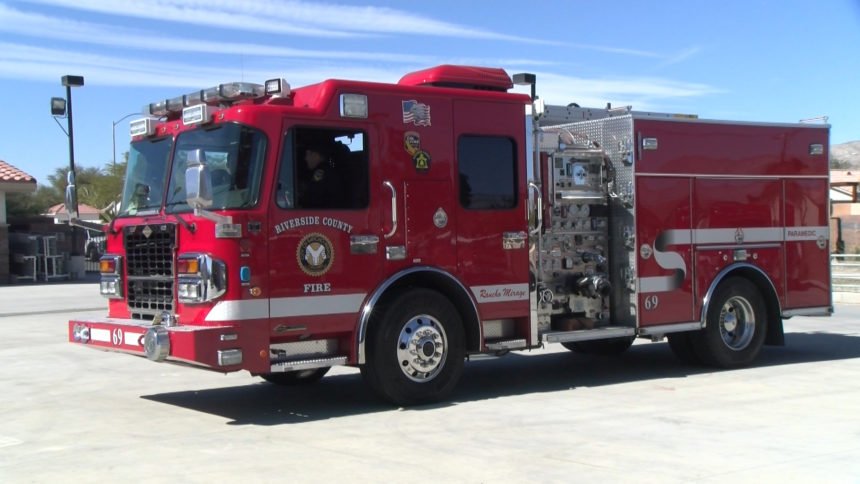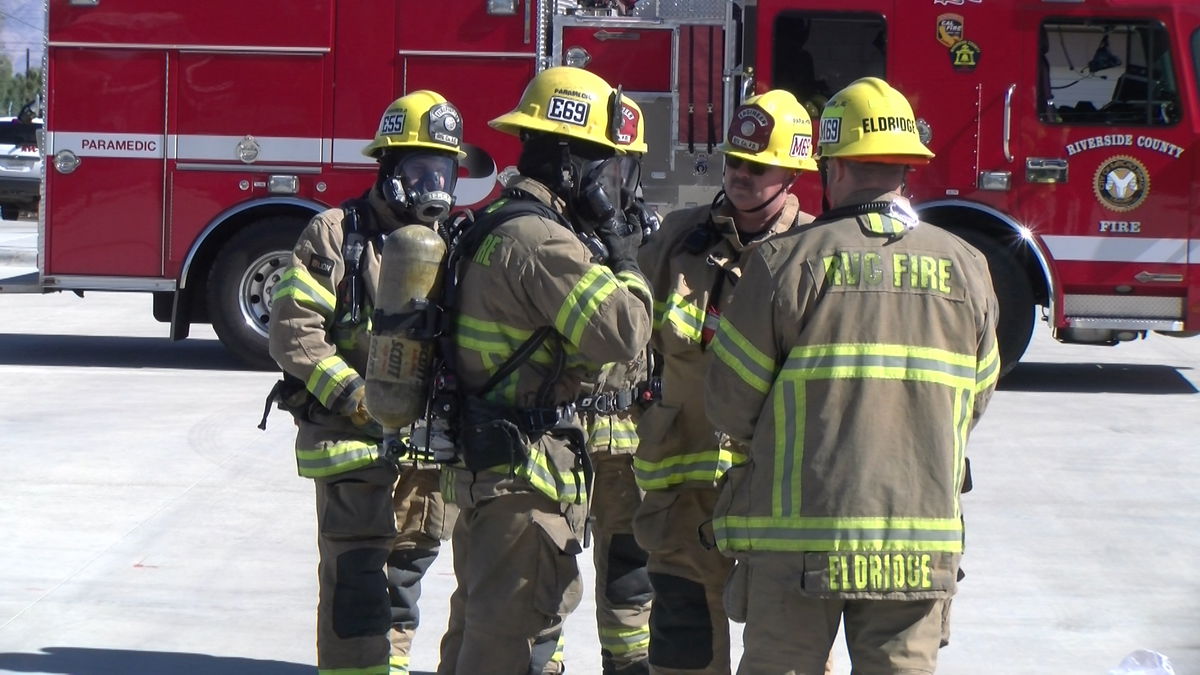Riverside County firefighters simulate a new set of guidelines for rehab during emergencies

At the fire training center in Thousand Palms, firefighters went through a simulation of new guidelines for rehab during emergencies. This new set of guidelines has been five years in the making and they are hoping it can be rolled out by March of this year.
The Riverside County fire department has created a new set of guidelines for firefighter rehab during emergency situations. These guidelines were simulated at the Thousand Palms training center. Jesse Park, battalion chief 3109, said, “This is designed to better protect our firefighters so we can become the most efficient firefighting force available.”
These new standard operating guidelines have been five years in the making. Firefighters have always had a form of rehab in incident situations. A lot of times it was just getting in the shade, having cold water, taking off their heavy gear and cooling down. What’s different now is they are trying to codify those practices. Park said, we are giving them names, and giving them locations, and some paperwork to follow along so we have some accountability.”
Park said that overtime firefighters do hot and exhausting work wearing their protective gear and they can get overheated. The goal is now to monitor these firefighters so they do not get too overheated so they can go back to work and continue the job.
With wildland fires in the lower valley, temperatures can exceed 115 degrees. During this time, firefighters desperately need rehab to continue their job. Park said another example is a bus crash, possibly in Chiriaco Summit, where the pavement can be very hot and firefighters might be out there for several hours. Rehab is also needed for structure fires since firefighters need to hike up to the top of a building if they need to extinguish a fire. Park said it can be physically taxing especially when your gear can weigh up to 100 pounds. Park emphasized, “If we overexert, it makes us less efficient when we go back out into the field, and we want to make sure we are as productive of a force as possible.”

This simulation has three areas. The first area is red and is labeled gross decon. Here, firefighters decontaminate by taking off their turn out gear and removing any contaminants from the job. The second stop will be the yellow area called medical monitoring. In this area they will get hydrated, their vitals will be taken and any other necessary medical attention will take place at this stage. The last stop of rehab set up will be the green area called crew ready. In this area, firefighters are able to be reassigned to go back to work. Park said this cycle is called a “crew work-rest cycle.”
This rehab structure will be implemented whether firefighters are in the cold or in the heat. During the simulation, they were making their own video of the process so the entire department will be able to watch it as a training in order to be on the same page when these new guidelines are released. Park said they are hoping these new guidelines will go into effect by March of this year.
Taban Sharifi will have more details on the simulation and how this is more efficient for the firefighters. Tune in tonight new at 6 p.m. on KESQ News Channel 3.
